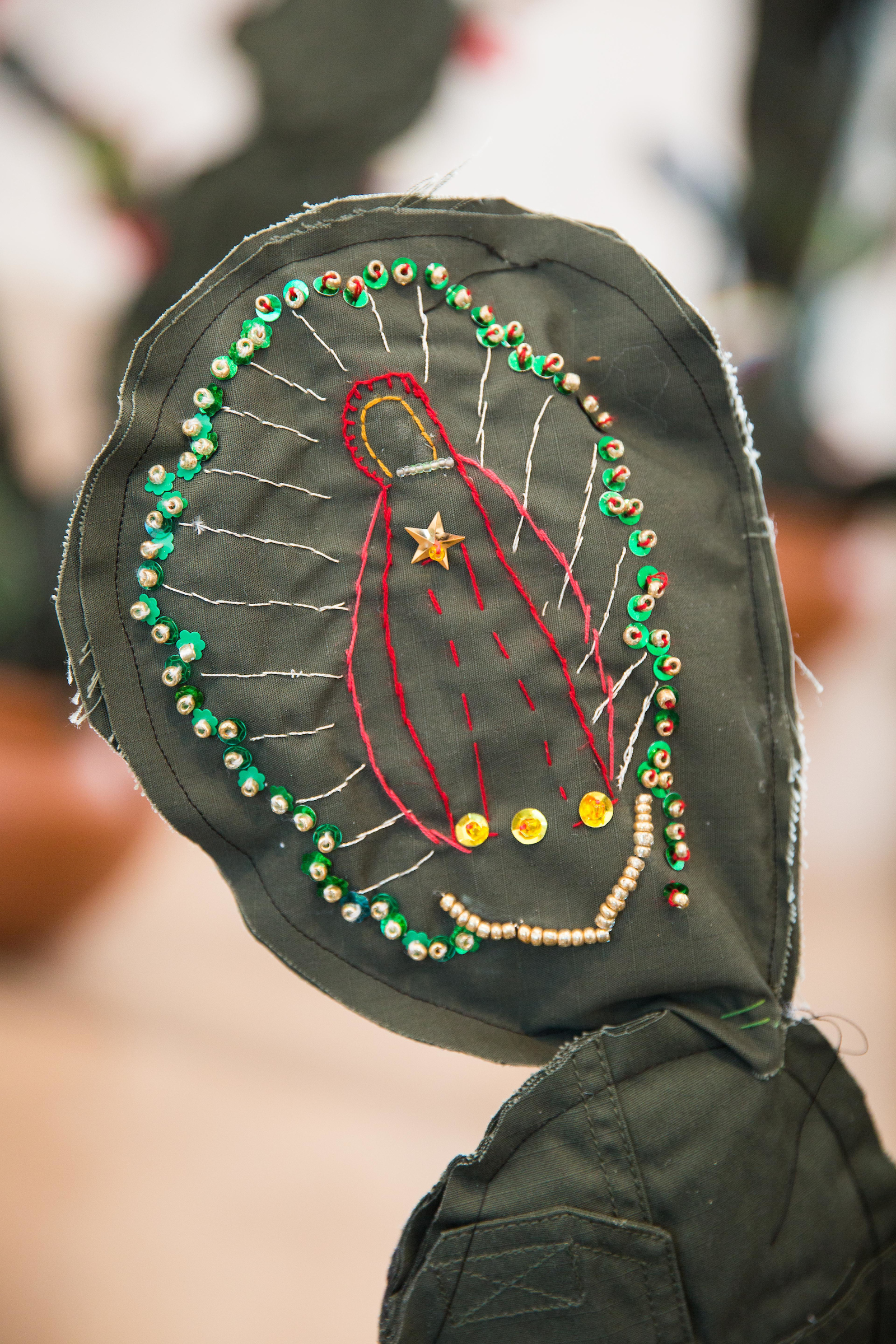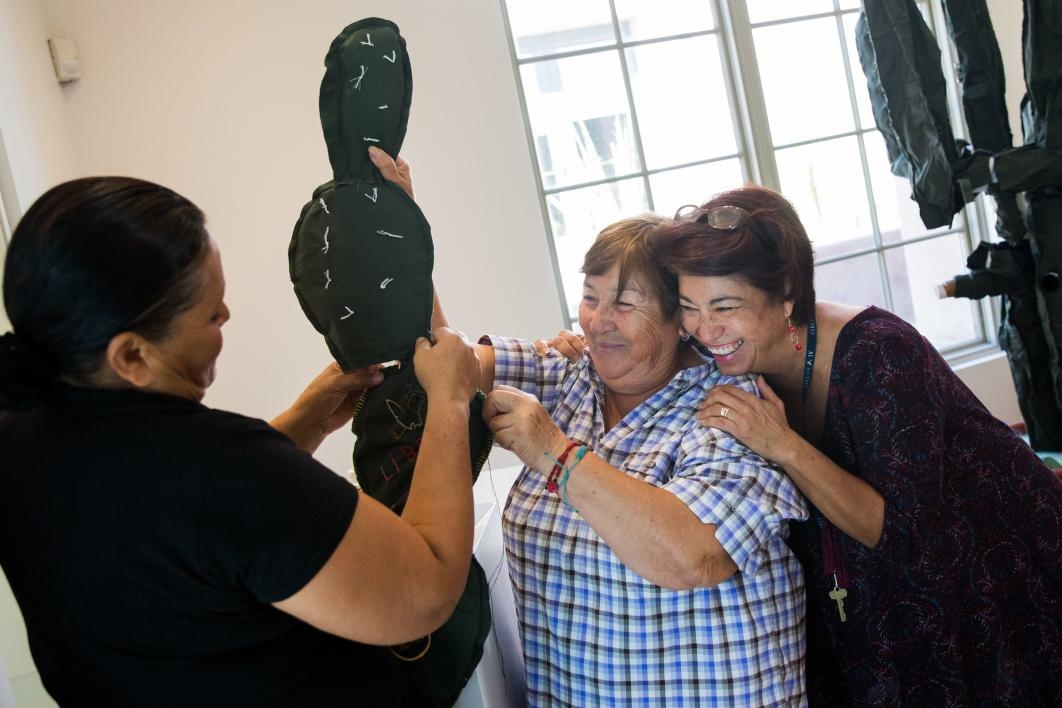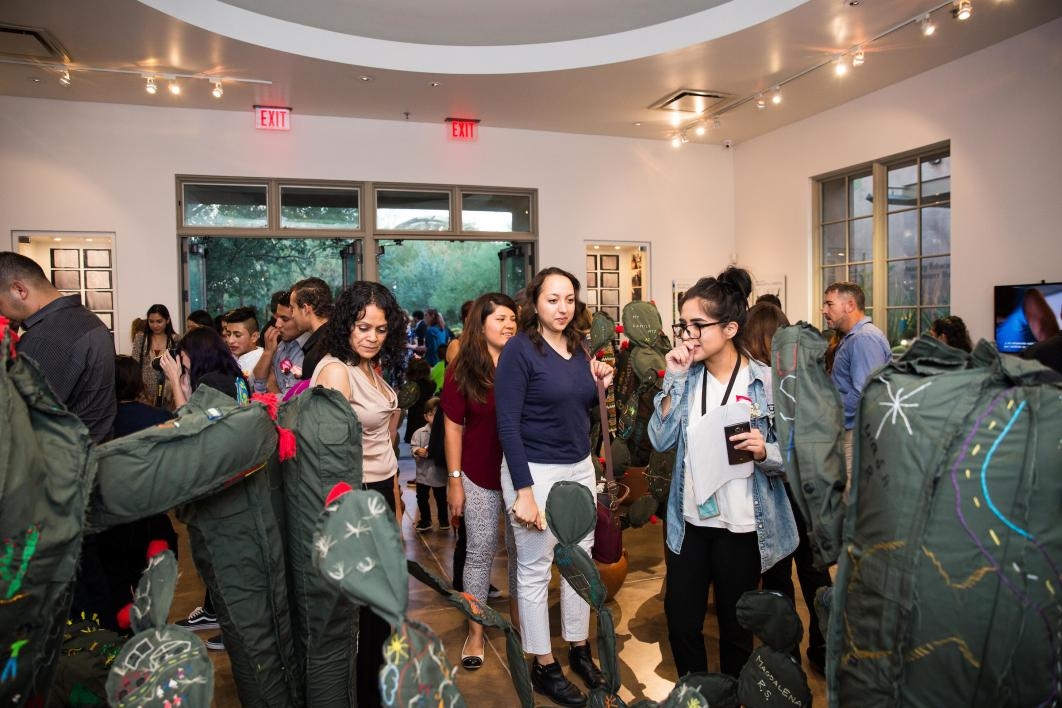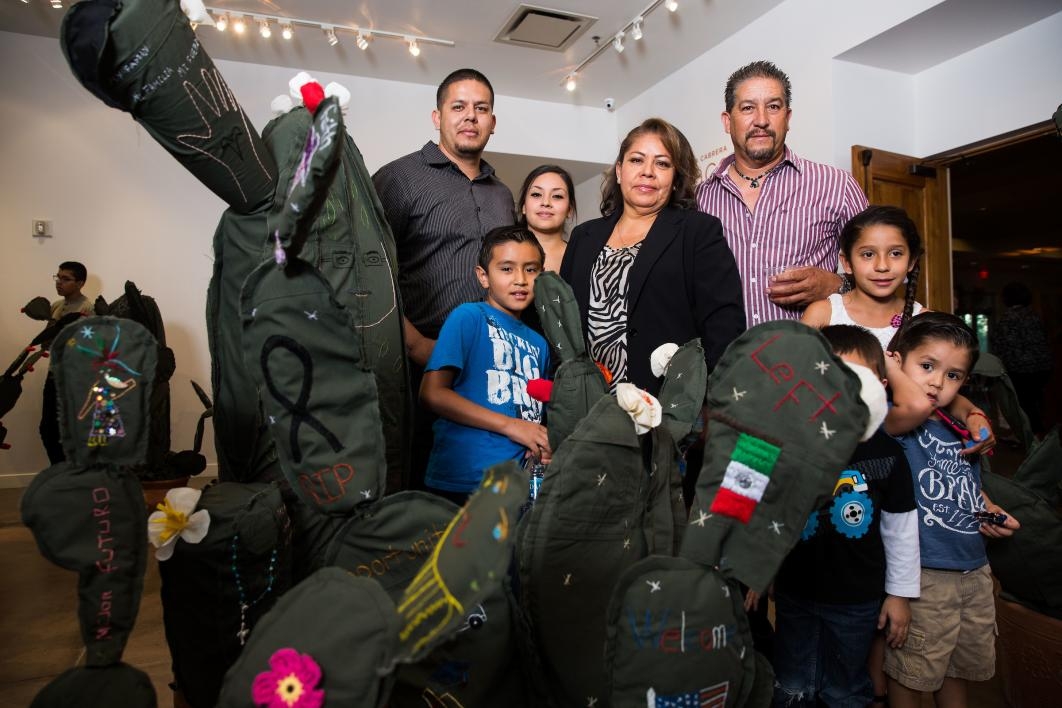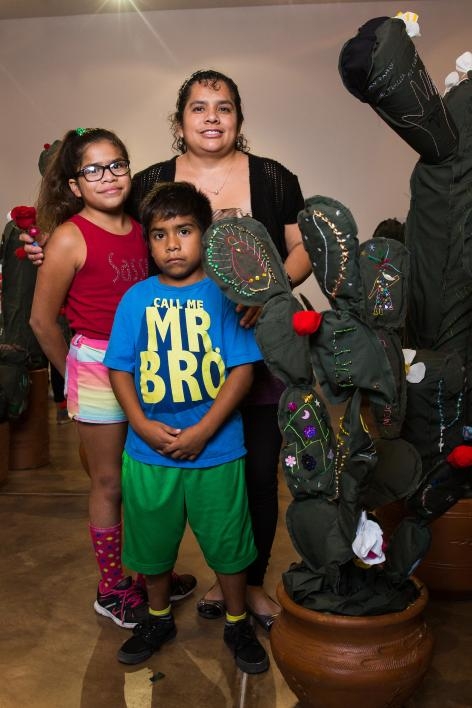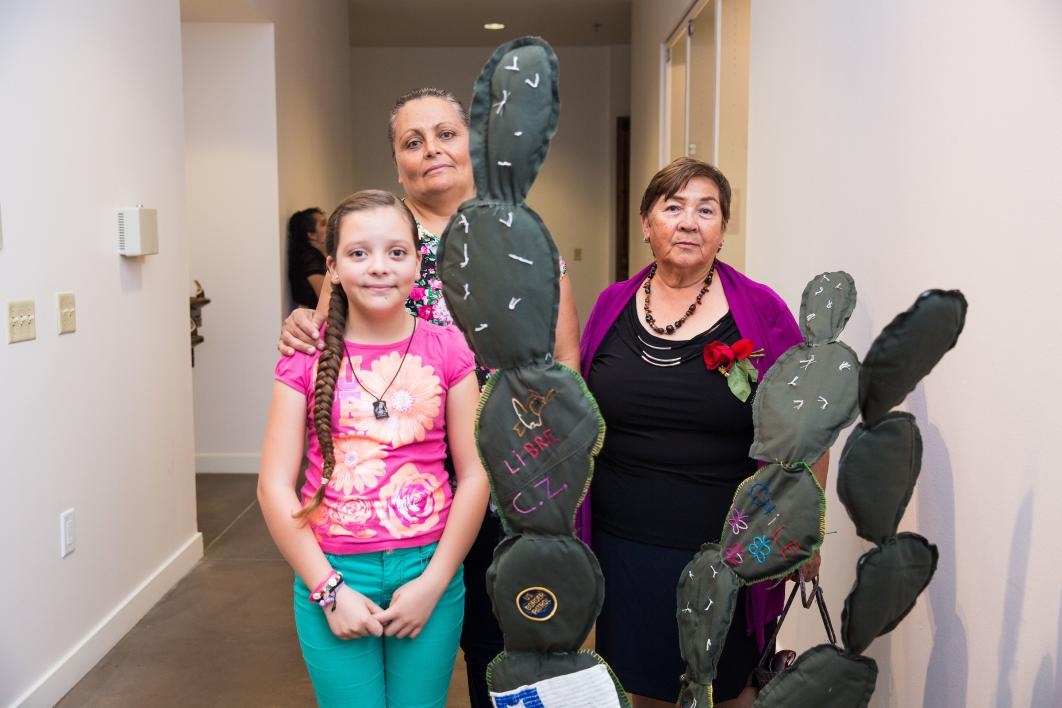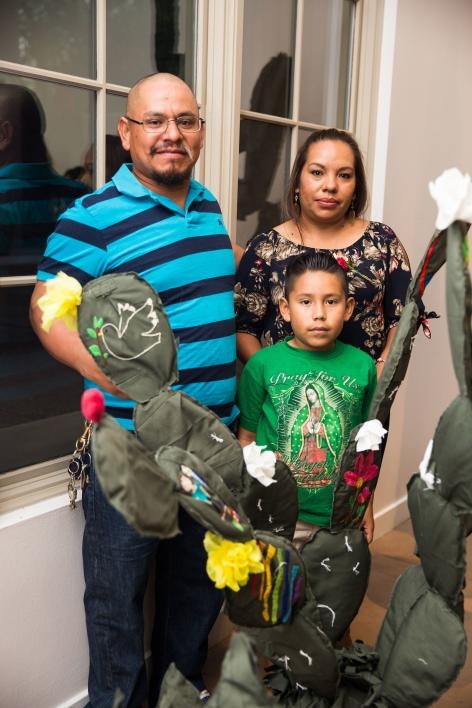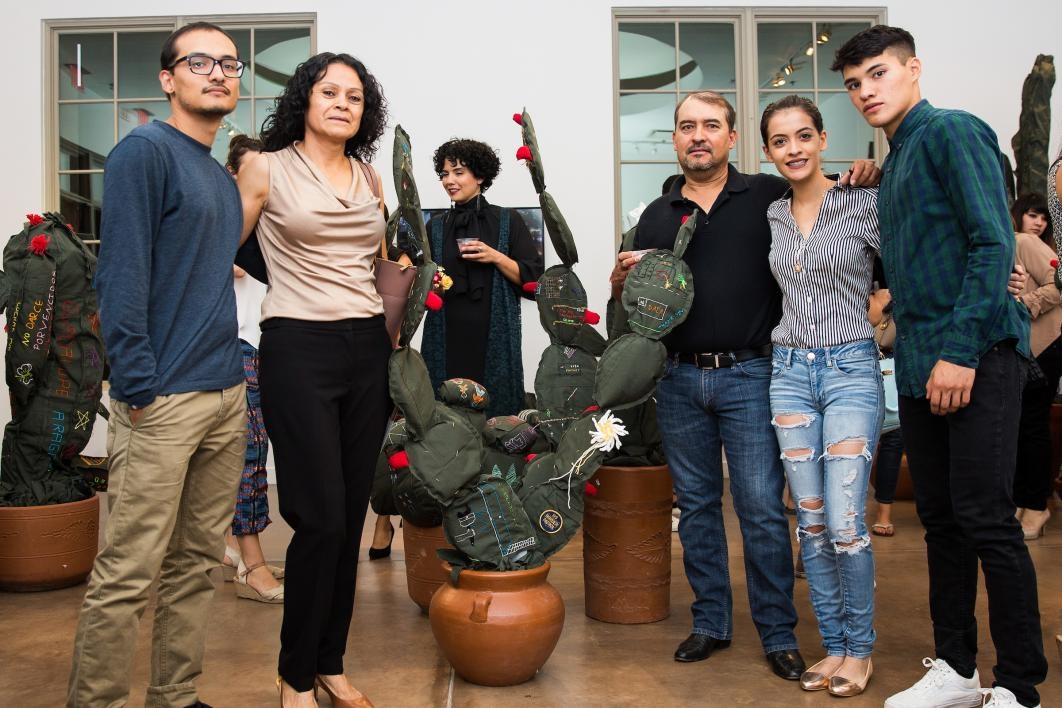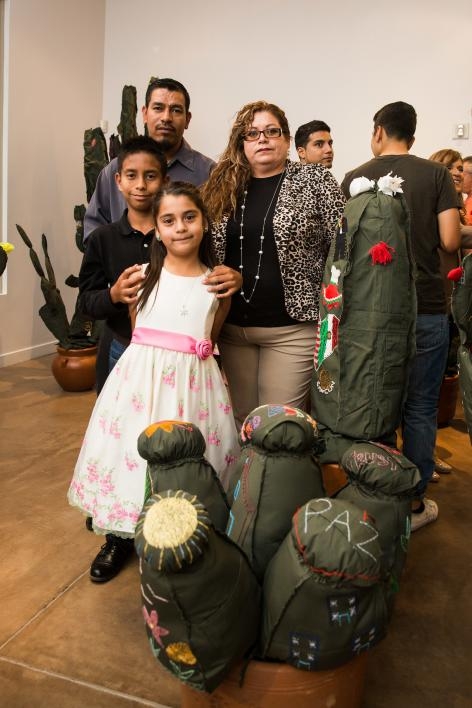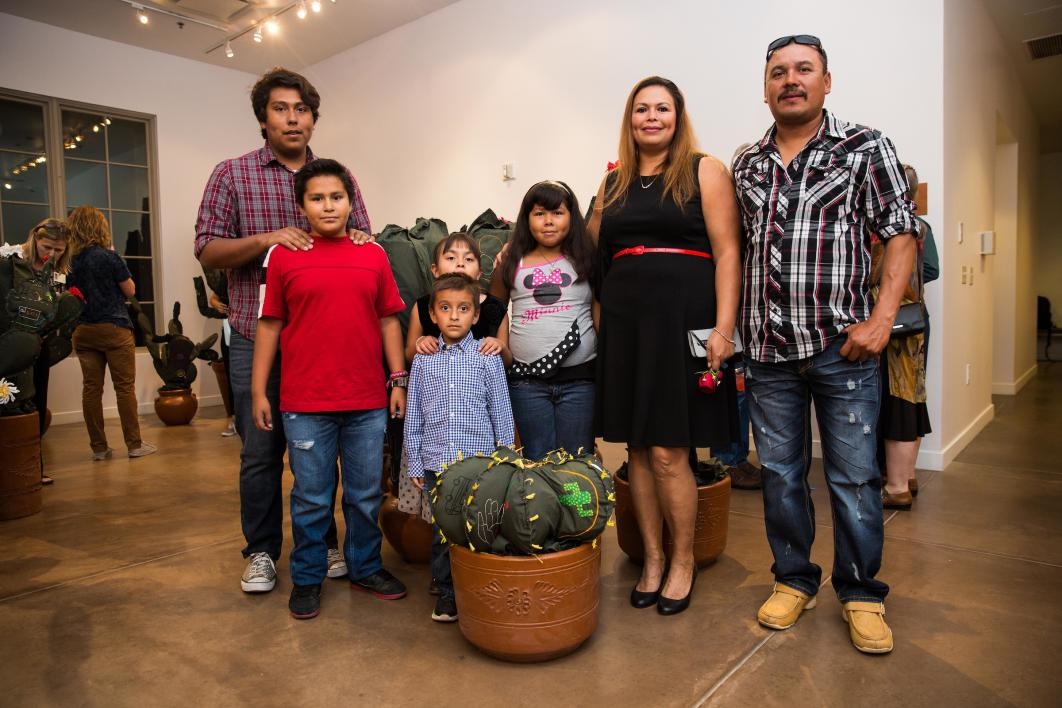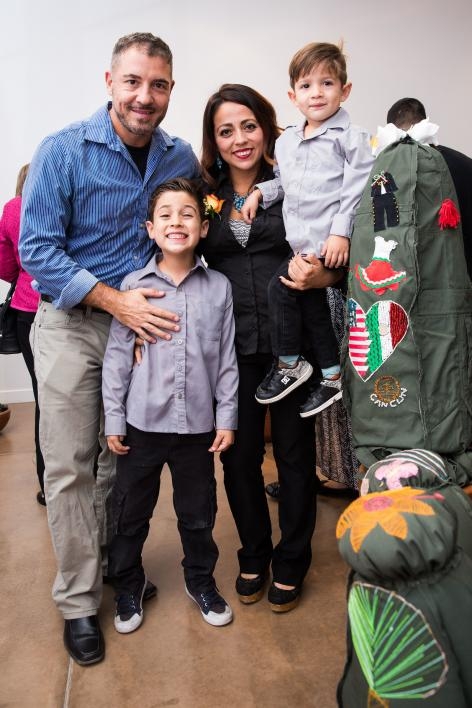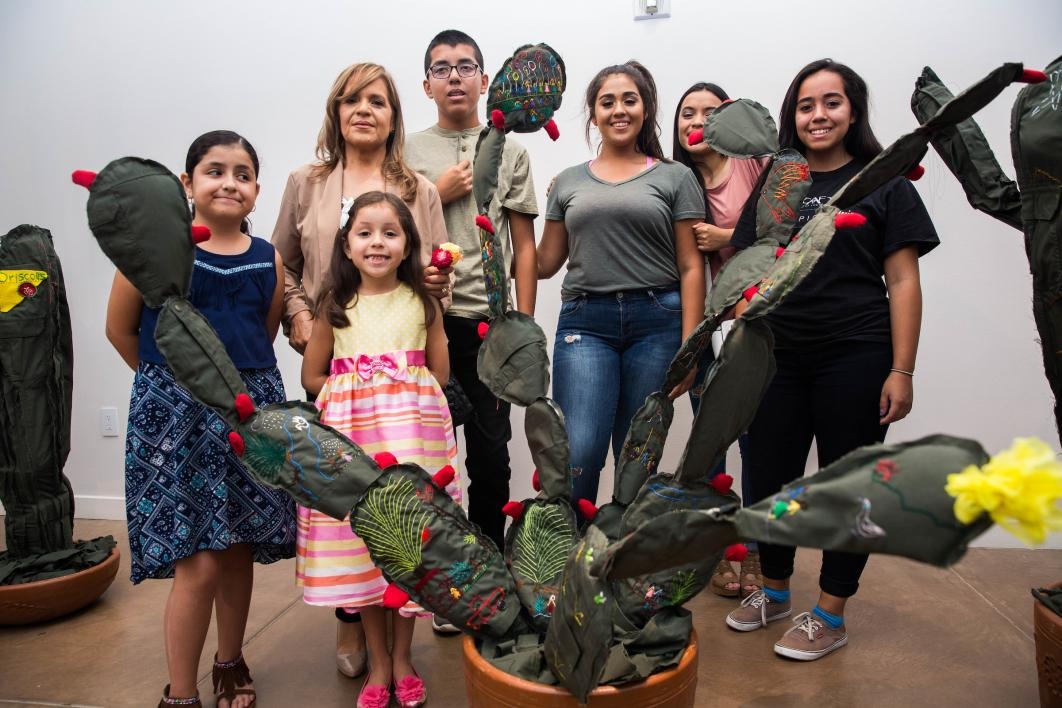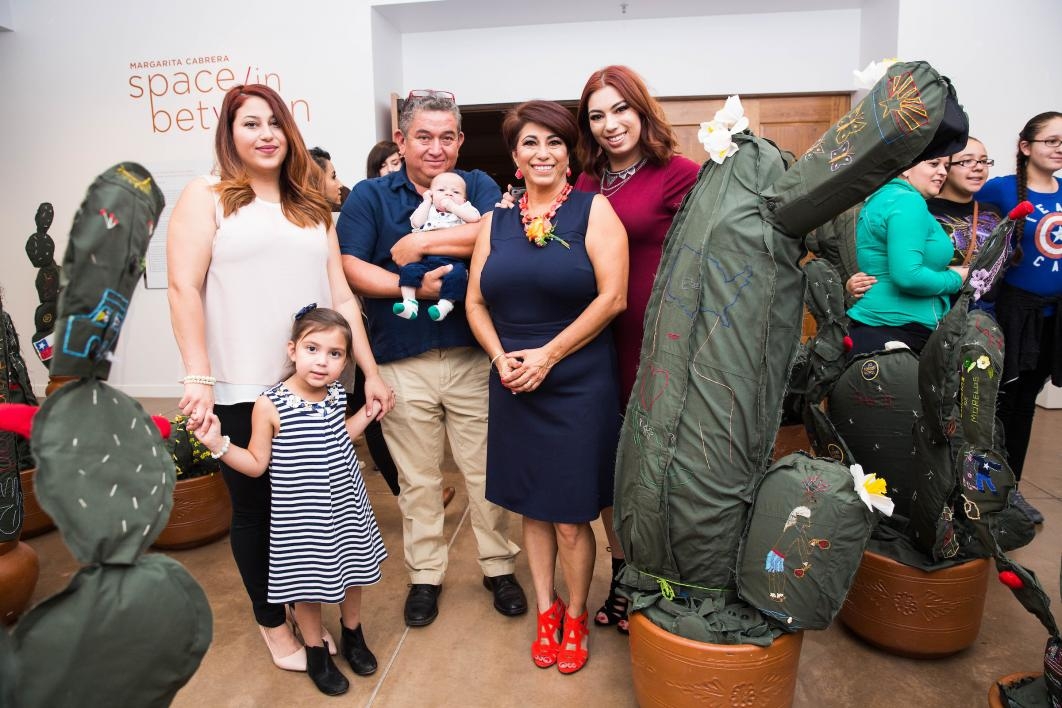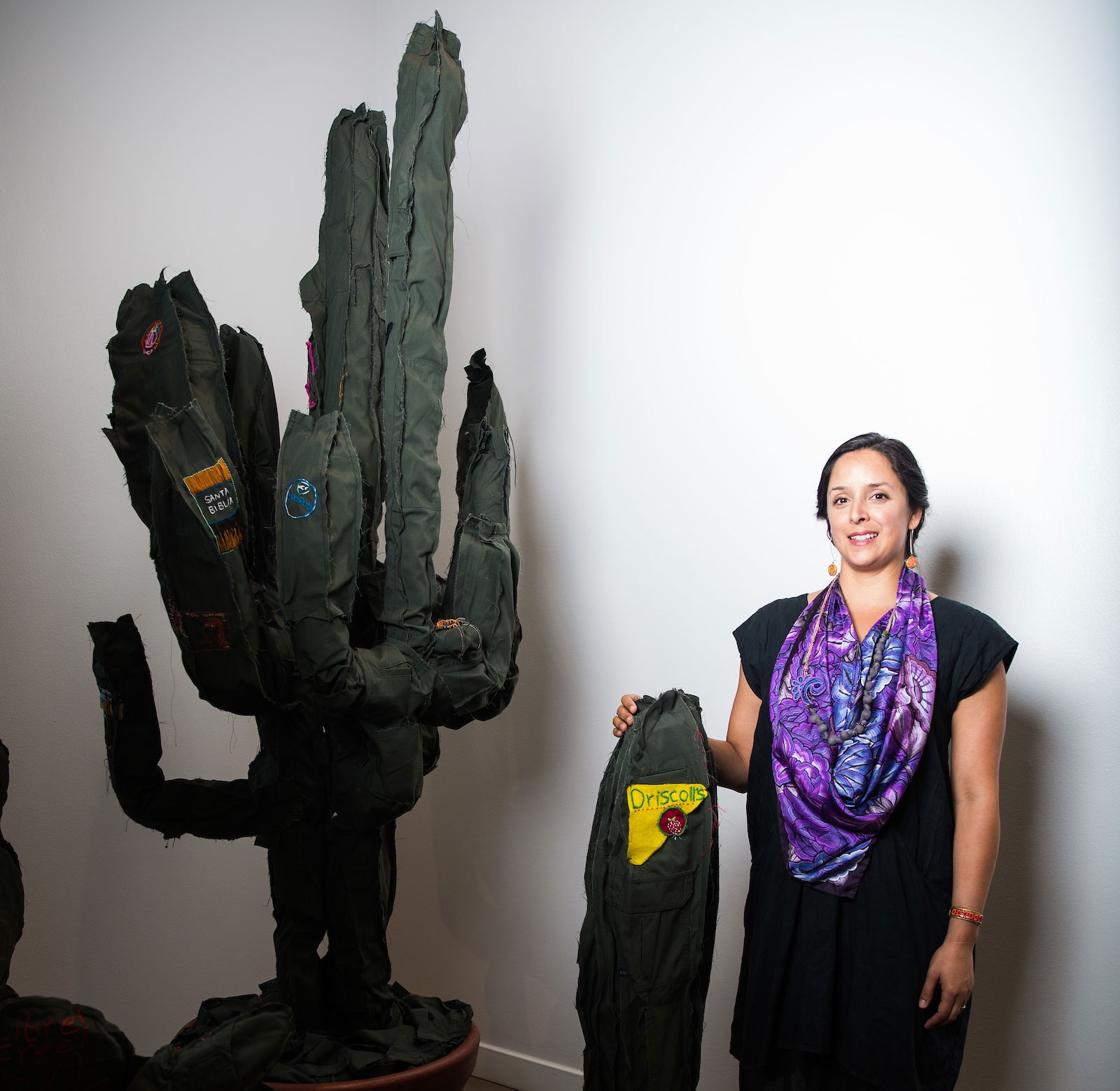Stitching together a story of immigration
ASU artist works with community to grow a Desert Botanical Garden exhibit that documents stories of the journey to U.S.
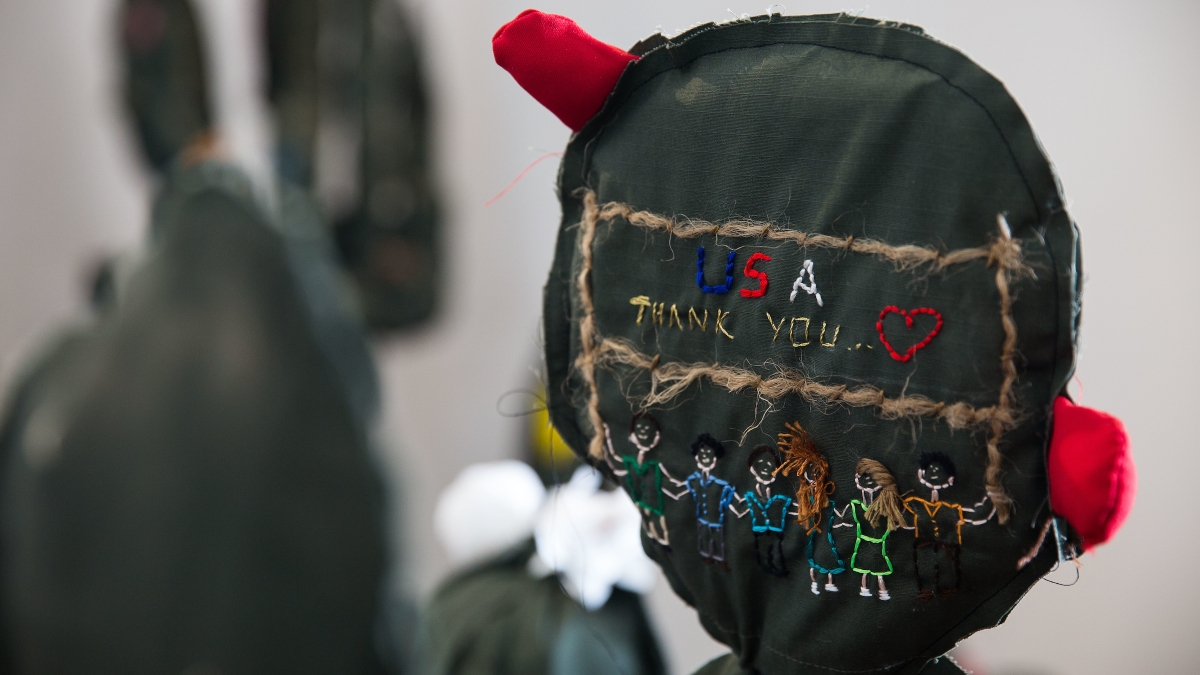
On a recent autumn afternoon, the Desert Botanical Garden in Phoenix was bustling, full of mothers tending to plants: barrel cactus, prickly pears, flowering saguaros.
But these are not the usual plants one finds in this garden. These are made of material from Border Patrol uniforms, covered in embroidery — messages, written and symbolic, documenting individual stories of migration.
This is what Margarita Cabrera, assistant professor of fiber artsCabrera is an assistant professor in the School of Art. at Arizona State University's Herberger Institute for Design and the Arts, was hoping to cultivate.
“These are sculptures that go beyond works of art,” said Cabrera, who is also an artist-in-residence at the ASU Art Museum. “This is cultural documentation that needs to be really celebrated as part of our American history.”
Since 2010, Cabrera has worked with Latino communities on the project, inviting people from El Paso, Texas; Houston; Charlotte, North Carolina; Santa Fe, New Mexico; and now Phoenix to share their stories of arrival to the United States.
Cabrera leads interested members from the community through three steps: community dialogue, embroidery workshops and lastly exhibitions where the stories of participants can be shared. She partneredCabrera hopes to involve more communities and universities in the project as it is toured nationally, culminating in a 2018 exhibit in Washington, D.C. with women from the Scottsdale Prevention Institute and Southwest Key immigrant shelters for the “Space In Between” exhibit at the Desert Botanical Garden.

Gabriela Garza's figure showing the U.S. on her mind and Mexico in her heart is embroidered on her saguaro at the "Space In Between" exhibit at the Desert Botanical Garden.
Photo by Deanna Dent/ASU Now
“These pieces are of course telling very important stories, immigration stories, from our Latino communities, and they are stories that are about transformation,” said Cabrera, who emphasizes that the workshop participants are the authors of these pieces.
“They are stories that talk about their fears, our fears as a Latino community, our dreams, our hopes. They are stories that describe the journey that people have taken to come to the United States.”
Gabriela Garza led the group of mothers from the Scottsdale Prevention Institute. The Navojoa, Sonora, native came to the United States 21 years ago with her husband, living in Los Angeles before settling in Phoenix. She now has her residency.
She points to one side of her saguaro where a figure, with one closed eye showing, has a map of America embroidered on her mind and a map of Mexico with three small white crosses below the heart. She has no regrets about her decision to build her family here and spend 19 years awaiting her residency before she could travel back home.
“When Margarita told us what the materials would be, the [Border Patrol] uniforms, I loved the idea,” Garza said.
Garza, who works with parents in the Latino community, likened the use of the uniforms to the blank slate of children.
“You can see what you want — you can see the green that reminds you of the death, the pain, the sacrifice, everything that represents the power of someone else, their authority, or you can change it and that’s art,” she said.
A Virgin of Guadalupe detail.
Many of the women likened their embroidery to the prickly pear pads on which people carve their names and their loves back home. They’ve embroidered their own experiences of crossing or flying over the border, but also the great rewards they felt from coming to a new country to establish their lives and families.
Lucia Fernandez moves around the room, her piece finished and assembled, to help other women as they trim loose threads and add small blooms to their cactus. She shows a section with a Virgin of Guadalupe, another with a sun and another pad with a moon. She recalls how she felt accompanied by the Virgin when she came to the U.S. and her gratefulness for the sun, which game them heat, and the moon that lit her way through the desert.
“I put my story as well — mostly you leave your family and what divides is a wall ... well, we left our family, and we have to fight for our future.”
She points to a heart. She says half of hers is in Mexico. “We’re divided, I guess.”
She shared the project with her mother and sister back home.
“To remember is beautiful, right? To remember everything that has happened to us.”
Cabrera also works on her own piece, a giant organ pipe cactus that looms in the corner of the room. It is full of small details, images of items found on those who perished in the desert: a Virgin of Guadalupe for prayers, a Bible and a bottle of Vicks VapoRub — someone quickly chimes in that it helps with chapped lips and that they had used garlic to keep snakes away.
The stories are all different. Some like Paola Iniesta, who had never picked up a needle in her life, entered the United States with a visa and initially felt she didn’t have a story to share and was humbled to hear the experiences of others.
“I didn’t cross the desert, I didn’t live through what some of these women lived through and a moment came when I asked myself what do I do,” said Iniesta, who is still here on a visa. “Maybe I didn’t live that experience, but I also had to leave my family, leave my mother and my nieces and nephews.”
She misses her traditions, the food and the mariachis.
“My story, my story is a little bit about leaving the place where we lived, our house and others to come and chase the American dream,” she said.
Ken Schutz, executive director for the Desert Botanical Garden, came to survey the final adjustments to the show.
“We’re an art venue but we don’t curate art, so to work with the ASU Art Museum, to work with the scholars at ASU allows us to bring in a curated show that we couldn’t do ourselves,” he said. “So I think what we add to the mix is a venue that has greater traffic, especially non-academic traffic — we can take the expertise and excellence from ASU and bring it to a wider audience.”
Sara Hernandez left Mexico 26 years ago with her two children and recalls reluctantly passing her two sons, ages 1 and 3, through the fence to the pollero (a term used for a person who is paid to help others cross the border, similar to a coyote).
She points to a stitched border wall and a McDonald’s where she waited with her children before being taken up to Phoenix in a vehicle crammed with 30 other migrants. Other pads show the words “opportunity” and a black ribbon for that 1-year-old son, who lived here for 26 years before passing away of a heart attack.
For many of the women crafting their stories on the fabric, the activity was outside their comfort zone.
“I never thought I would come and make some embroidered prickly pears in the United States,” Hernandez said with a laugh.
Hernandez — whose U.S. residency is being processed — recalls the heaviness of the material, in both a literal and metaphorical sense, “hopefully for them [Border Patrol] it will be an honor that we could work on that material. I think we didn’t know if we would be able to do it,” she says as she looks around at this makeshift garden before saying with a smile, “but it’s impressive.”
‘Space In Between’
What: Exhibit that centers on the creation of artworks and promotion of cultural dialogues on themes related to community, craft, imagination, cultural identity, labor practices and sustainability.
When: 10 a.m.-5 p.m. daily through Feb. 12.
Where: Desert Botanical Garden, 1201 N. Galvin Parkway, Phoenix.
Admission: Exhibit entrance is included with a paid garden admission or membership. General admission is $22 for adults, $20 for those 60 and older, $12 for students, $10 for children ages 3-12, free for younger than 3.
Details: https://www.dbg.org/events/margarita-cabrera-space-between.
Top photo: Rosa de los Santos' prickly pear pad shows her thank you to the country she calls home at the "Space In Between" exhibit at the Desert Botanical Gardens. Photo by Deanna Dent/ASU Now
More Law, journalism and politics
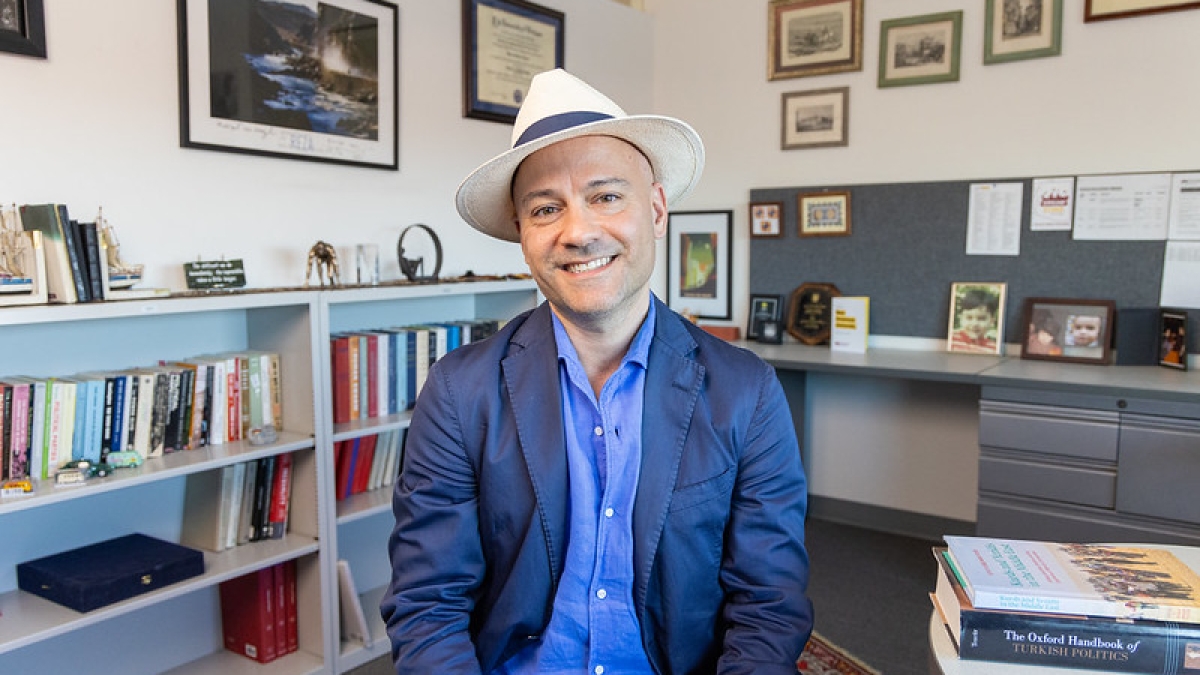
School of Politics and Global Studies director's new book explores mass violence
Why do people commit atrocities and why are certain groups, including religious and ethnic, more vulnerable to large-scale violence? These questions are explored in a new book by Güneş Murat Tezcür…
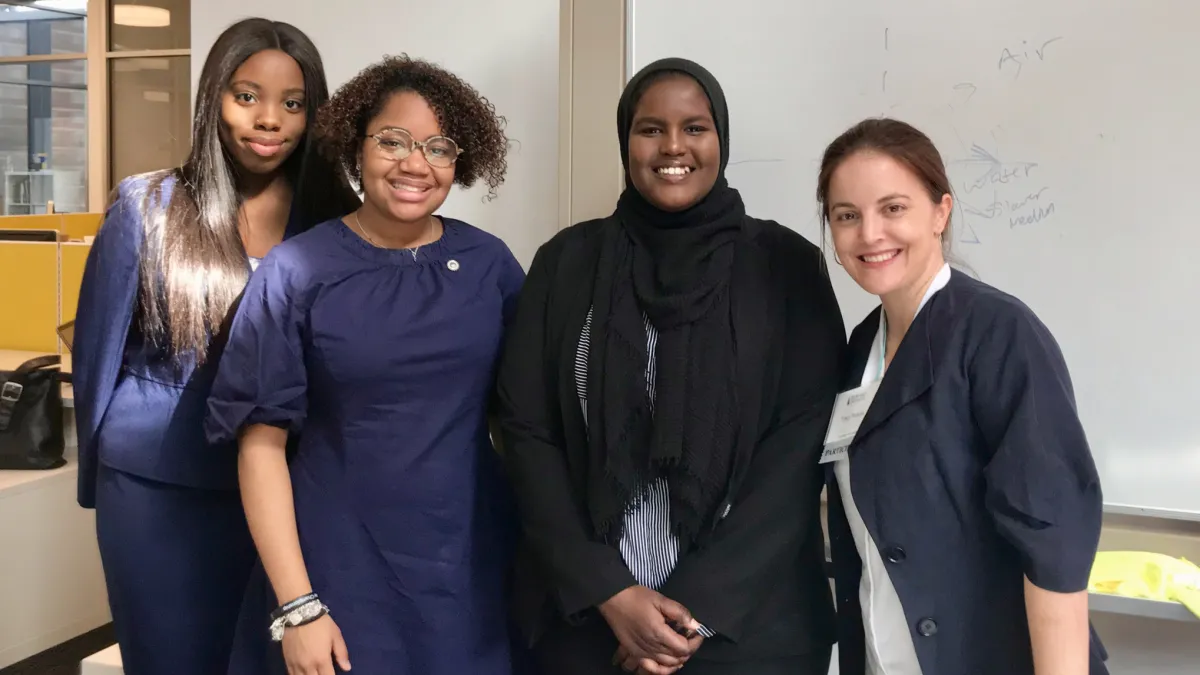
ASU faculty contributing to improvement of Wikipedia
Many academics have a love-hate relationship with Wikipedia. While the website has information about almost anything you can imagine, the credibility of that information is sometimes suspect. Tracy…
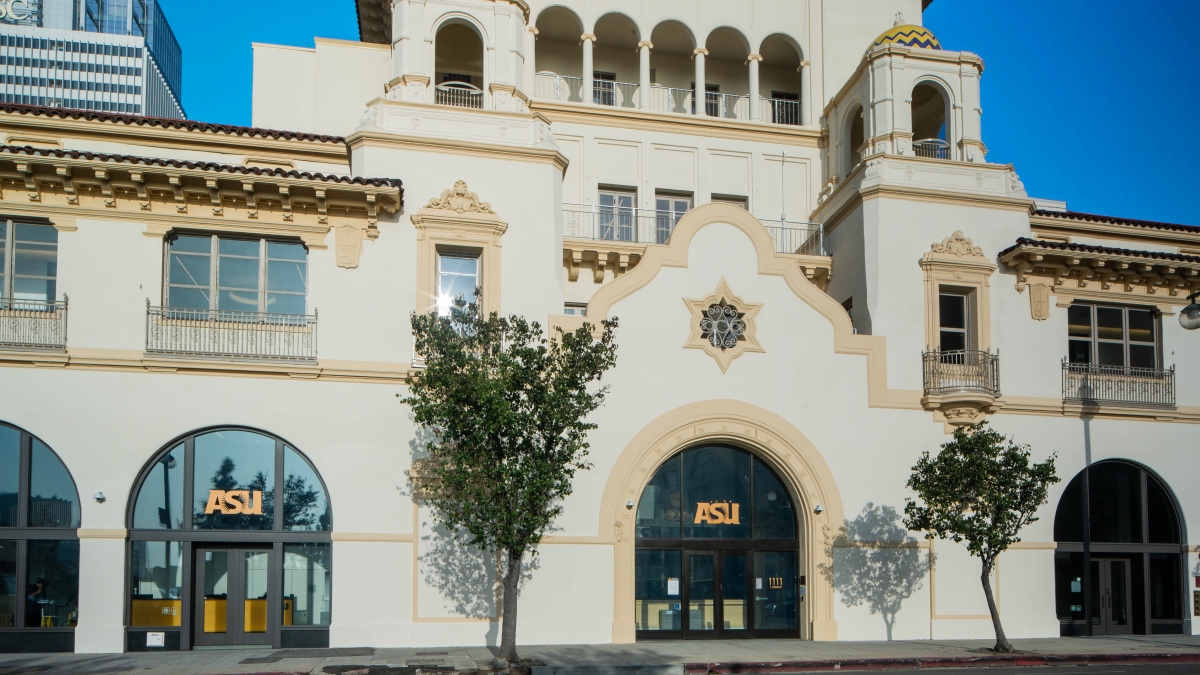
ASU Law students gain vital experience through Los Angeles location
Students at the Sandra Day O’Connor College of Law at Arizona State University may be concentrated in the school’s downtown Phoenix headquarters, but they have more choices than ever when it comes to…
